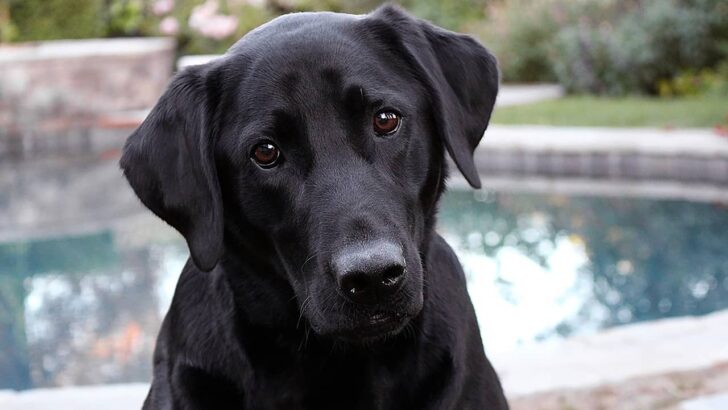- Your Dog Ate Chicken Bones, What To Do? Here Are 5 Important Steps To Follow - July 15, 2022
- How To Stop Dog From Licking Paws – Break The Habit! (Top Causes & Easy Solutions) - February 8, 2022
- 7 Best Fresh Dog Food Delivery Services - December 12, 2019
Just like people, dogs have various way of communicating
their emotions and desires. Perhaps the most familiar means are barking,
whining, growling, tail wagging, and tail tucking. We often assume that a
barking or growling dog is behaving aggressively, a dog wagging his tail is
happy, and a dog whining and tucking his tail between his legs is fearful or
guilt-stricken.
While in some situations, these assumptions may be correct,
many dangerous consequences can result when we misread or misunderstand a dog’s
body language. Understanding what our dog’s posture, tail, and facial
expressions are telling us about his mood and intentions can help us avoid danger and support
a happy existence for our beloved fur baby. There are many areas of a dog’s
body you can observe to ascertain how he is feeling, and predict what his
intentions might be. A dog’s eyes, mouth, ears, tail,
hair, and posture can all help us figure out how he feels.
Eyes
As the saying goes, the eyes are the window to the soul. Dogs’ eyes are expressive and can give us a lot of information about the emotions they might be experiencing in a given situation. The shape of a dog’s eyes, the position of his eyelids, and many other factors can be very telling in figuring out what Fido is feeling.
Alert
If a dog is alert, his eyes will usually be wide open and looking in the direction of whatever is interesting him at that moment. Keep in mind, an alert dog is typically trying to decide if what he sees is a threat and whether or not he needs to take any action. Follow your dog’s gaze to ascertain exactly what he is focused on, and try to determine whether he will perceive it as a threat or not. A dog who perceives a threat may act fearful, submissive, or aggressive, and knowing which reaction your dog might be displaying can help protect everyone involved.
Aggressive
If your dog feels aggressive, his eyes will appear larger than normal, and you may be able to see the whites of his eyes. If the whites of his eyes are visible, he likely feels threatened or stressed, and those feelings could result in potential aggression.
A direct stare is also an indication of aggression. A dog making direct and focused eye contact with a human or with another animal is challenging or threatening that person or creature. If you happen to be the focus of such a stare, protect
yourself (and the dog) by slowly looking away, as maintaining eye contact with the dog could provoke him to attack.
Another indicator of aggression is a dog’s looking out of the corner of his eye with the whites visible. This expression often occurs if a dog is guarding food, a toy, or any other high-value item. He is liable to display aggression if you or the perceived threat gets too close.
Finally, if a dog’s pupils are dilated, he may feel scared and react aggressively.
Fearful and Submissive
Though dilated pupils may indicate fear and aggression, they may also tell us that a dog feels threatened, or generally distressed. Brief eye contact or avoidance of eye contact also indicates a dog feels fearful and submissive. If a dog not only refuses to make eye contact but also physically turns his head away to avoid it, he is expressing extreme fear and total submission. He has no intention of acting aggressively, and hopes you don’t either! Partially closed eyes can also indicate a desire to avoid any confrontation.
If your dog’s eyes appear smaller than normal, he is likely scared or stressed. If he is squinting, he may feel unwell, be experiencing pain or feeling submissive.

Relaxed and Approachable
While squinting can sometimes be a sign of pain, fear, or discomfort, it can also indicate that your dog is relaxed and approachable. If he is gently starting at you with a relaxed gaze, he wants your love and attention. If his pupils are dilated, he may want to play.
Mouth
People commonly assume that a dog showing his teeth indicates aggression, but dogs also pant, smile, and grin, and these facial expressions also reveal their teeth. To help improve your understanding of your dog, it’s important to differentiate between the various forms of teeth-baring.
Alert
An alert dog will typically have his mouth
closed and teeth hidden (unless he is hot and panting).
Aggressive
If a dog curls his lips and reveals his top and bottom teeth or wrinkles nose, he is feeling aggressive and could potentially attack. A dog feeling fearful aggression may curl his lips slightly downward, and the corners of his mouth may seem tightly stretched back. If a dog draws his lips all the way back to show all of his teeth, he is likely to bite.

Fearful and Submissive
Some dogs engage in the endearing act of a submissive grin. Unfortunately often mistaken for aggression, a submissive grin occurs when a dog pulls back his lips to reveal the top row of his teeth, or, sometimes, all his teeth. If you see this facial expression paired with playful eyes, a tucked tail, whining, rolling over, or other playful or submissive expressions, your dog is likely feeling submissive–not aggressive.
A drawn-out, exaggerated yawn helps a dog release stress and anxiety, and so can be a sign that your dog is feeling distressed. Lip-licking can also indicate your dog feels stressed or anxious. Many dogs will also pant rapidly if they are distressed, and a frightened dog may stretch is his lips back and over his teeth to reveal his top and bottom teeth.
Relaxed and Approachable
Typically, a dog who feels relaxed is safe to approach. If a dog’s mouth is either closed or slightly open, he probably feels relaxed or playful. If he is very relaxed, his tongue may even loll out of his open mouth. Similarly, his lips may turn slightly upward, and he may pant gently.
Canine Body Language: A Photographic Guide Interpreting the Native Language of the Domestic Dog
Ears
It’s important to keep in mind that many dog breeds’ ears vary. Dogs such as beagles and basset hounds have droopy ears, while dogs such as German shepherds have relatively rigid ears. Some dogs’ ears may even have been cropped when they were puppies. Regardless, we can learn a lot about a dog’s emotions based on the position of his ears.
Alert
If a dog is alert, his ears usually point towards whatever it is he is interested in. His ears may seem to be pointed slightly forward and may twitch as he listens for auditory input.
Aggressive
A dog who is feeling aggressive will typically point his ears forward and may spread them as wide apart as possible to make himself appear larger. If a dog’s ears lay flat back against his skull, this may also indicate aggression, especially if paired with any other aggressive expression.
Fearful and Submissive
A fearful and submissive dog will generally position his ears flat back against head and will display other submissive behaviors, such as whining, tail tucking, or rolling over.
Relaxed and Approachable
If a dog is safe to approach, he will usually hold his ears in a neutral and relaxed position. Typically, this includes holding his ears slightly up, or allowing them to flop down to the sides.
Tail
Most people harbor the all-too-common misconception that a dog wagging his tail is happy. While that is often true, being able to adequately gauge the dog’s emotion really depends on your ability to identify what type of tail-wagging your pup is doing.
Alert
If a dog is alert and interested, he will typically hold his tail in a position horizontal to his spine, or perfectly in line with his back. Some dogs may also hold their tail high when they are alert.
Aggressive
A dog in an aggressive mood will likely hold his tail straight up. The hair on the tail may bristle, and the tail itself may twitch in a slight wag. This slight, twitching wag is known as “flagging,” and is an indicator that the dog may attack.
Fearful and Submissive
If a dog tucks his tail between his legs, he feels fearful and submissive. Sometimes, his tail may wag in a small, tight wag–but he is not happy; he simply wants to avoid confrontation.
Relaxed and Approachable
A relaxed dog’s tail is usually in a downward, neutral position. This can vary by breed, however. Some dogs, such as pugs, have naturally upturned tails.
Often, a relaxed dog may gently wag his tail from side to side. A circular wag means your dog is particularly happy, and an enthusiastic side-to-side wag expresses extreme joy. In some cases, the dog’s entire torso may seem to wag.
Hair
Aggressive
A dog who is feeling aggressive will often raise the hair along the back of his neck and spine, in an attempt to appear as large as possible. This is knowns as raising his hackles.
Fearful and Submissive
A dog experiencing extreme fear or distress will often express this emotion with excessive shedding. This is why your dog may appear to be shedding more than normal during a visit to the vet.
Overall Body Posture
While analyzing the individual parts of a dog’s body to assess his mood is a good starting point, paying attention to a dog’s whole body, and the way the various parts are working together to express an emotion is the best way to tell how he feels. For example, a dog whose ears are flat back against his head may be experiencing aggression, fear, or submission. To tell which, we need to also assess his tail, eyes, hair, and mouth. We can read the signals better in cooperation with each other.
Alert
A dog who is alert may attempt to look bigger by tensing his muscles, standing up tall and
straight, and holding his head high above his shoulders. He may also lean slightly forward in the direction of what is interesting him, and hold his ears up and forward, or in
direction of what holds his attention. His tail will likely be in a neutral or high position, and may slightly wag from side to side.
Aggressive
Aggression in a dog can be the result of either fear or dominance, and your dog’s intentions and tendency to act on his aggression are affected by what motivates it.
Fearful aggression may include cowering coupled with raised hackles. The dog is likely
to growl, snarl, or display his teeth, and may bite if he feels cornered or trapped, or after the perceived threat to his safety is retreating. His ears will likely be back, and his tail may be tucked.
Offensive aggression occurs when your dog is angry or asserting
dominance. It is typically expressed with raised hackles, a flagging tail, and an attempt to look as large as possible. Your dog is also likely to hold a direct stare and maintain eye contact, lean forward, growl or bark, and tense his body. He may also curl his lips and wrinkle his nose and forehead.
Fearful and Submissive
If a dog is fearful, he will usually try to look as small as possible. He is likely to cower, lowering his body as close to the ground as possible, and tucking his tail under his torso and between his legs. He may even roll over to expose his belly, and tuck is paws in. His ears are likely flat back to his head, and he may avoid eye contact by turning his head away from what is frightening him. Some dogs will also display the submissive grin or smile discussed above. A dog who is extremely fearful or submissive may also urinate slightly.

Relaxed and Approachable
An approachable dog has a relaxed body posture and is solidly balanced on all four paws. He holds his tail in a normal, neutral position, and it may wag from side to side. He may squint slightly, and it is likely that no whites are visible in his eyes. His ears are up, but not pricked forward, or relaxed slightly out or back. His mouth is relaxed, and his lips may turn slightly upward.
A particularly happy dog’s body may appear loose and wiggly, and his body may curve into a “C” shape as if he is trying to touch his nose to his tail.
A dog in a particularly playful mood may offer a play bow, sticking his hind end in the air and wagging his tail. Be careful not to mistake this for a prey bow, which is more intense and focused, and indicates the dog plans to pounce or attack.
The Body Language and Emotion of Dogs: A Practical Guide to the Physical and Behavioral Displays Owners and Dogs Exchange and How to Use Them to Create a Lasting Bond
Helpful Resources
Check out this webinar series about communicating with your dog from the ASPCA, and visit the sites below for even more information about understanding what your dog’s body language is telling you about his emotions.
American
Society for the Prevention of Cruelty to Animals
Continue reading:











